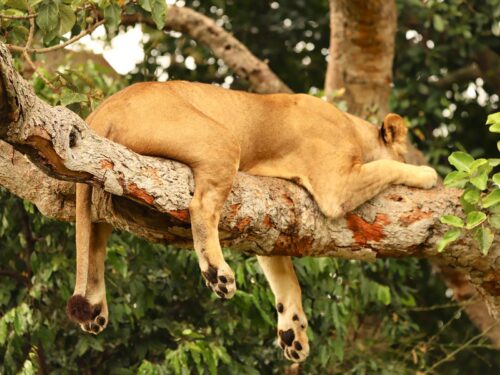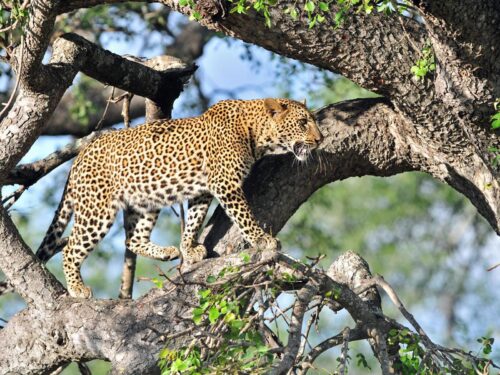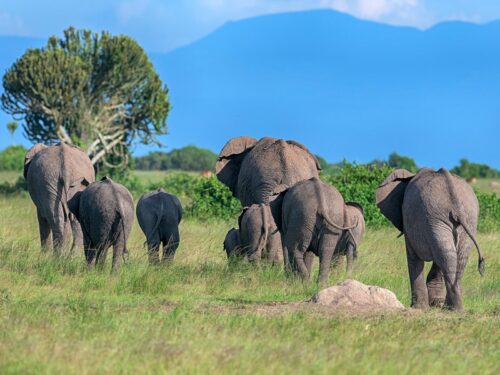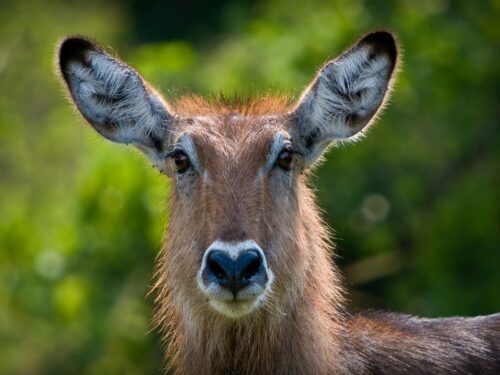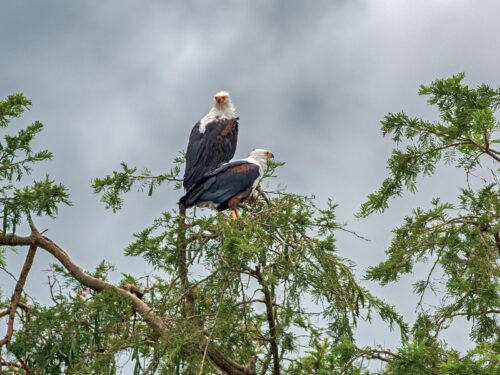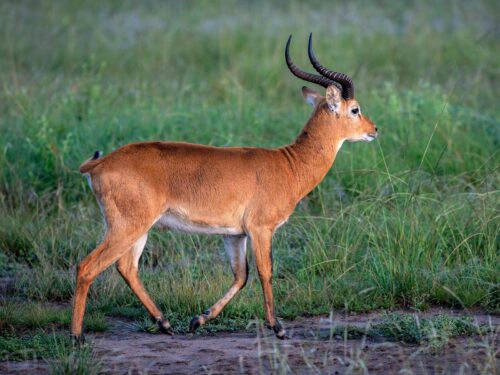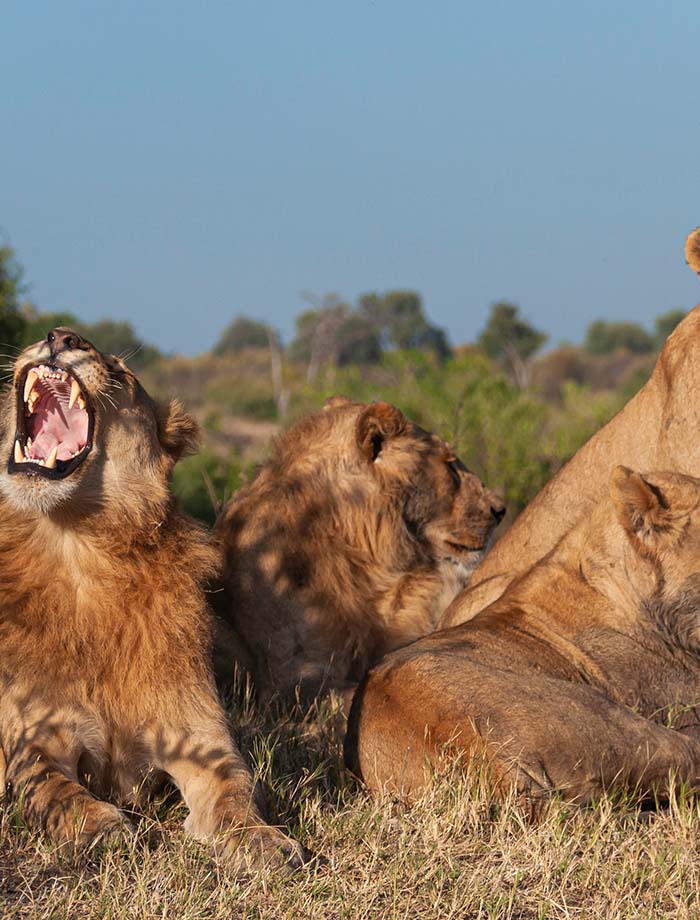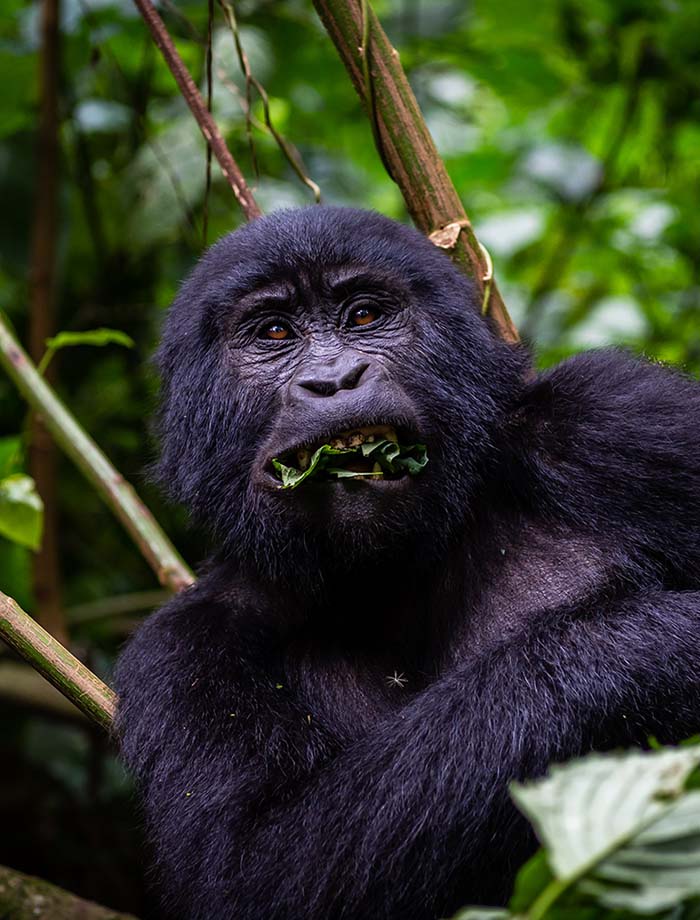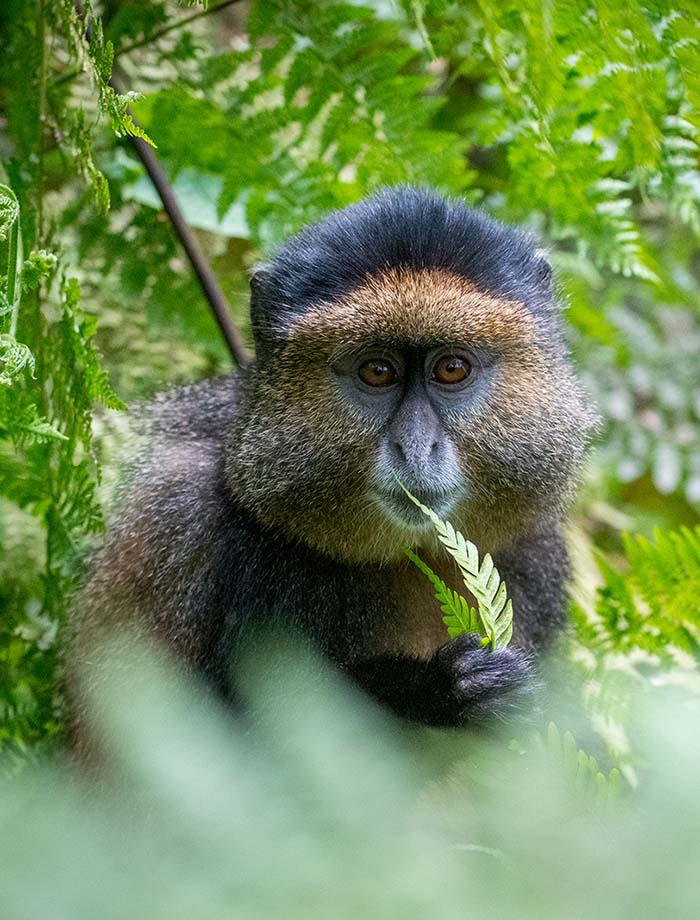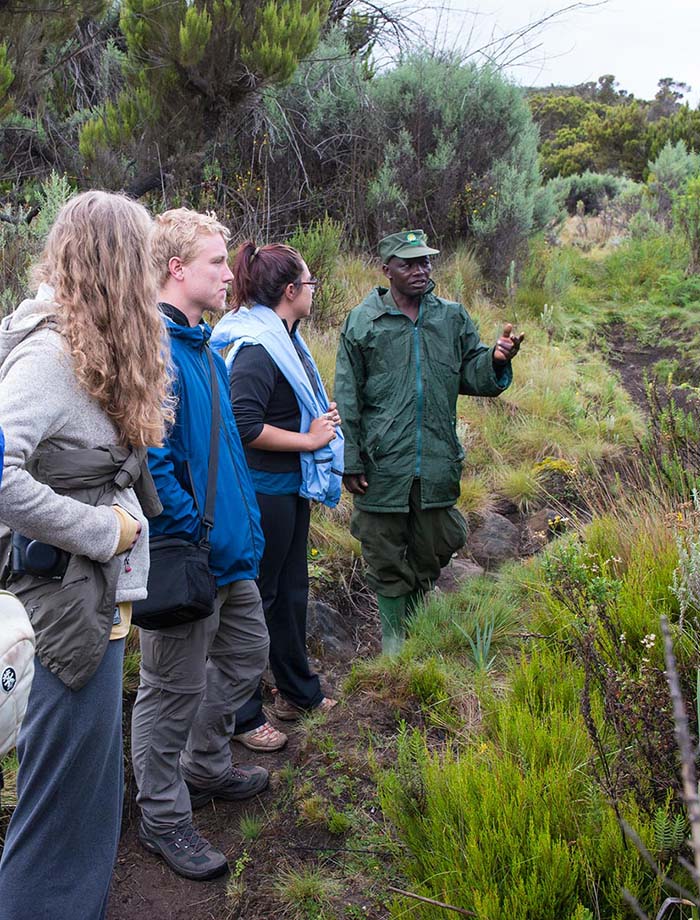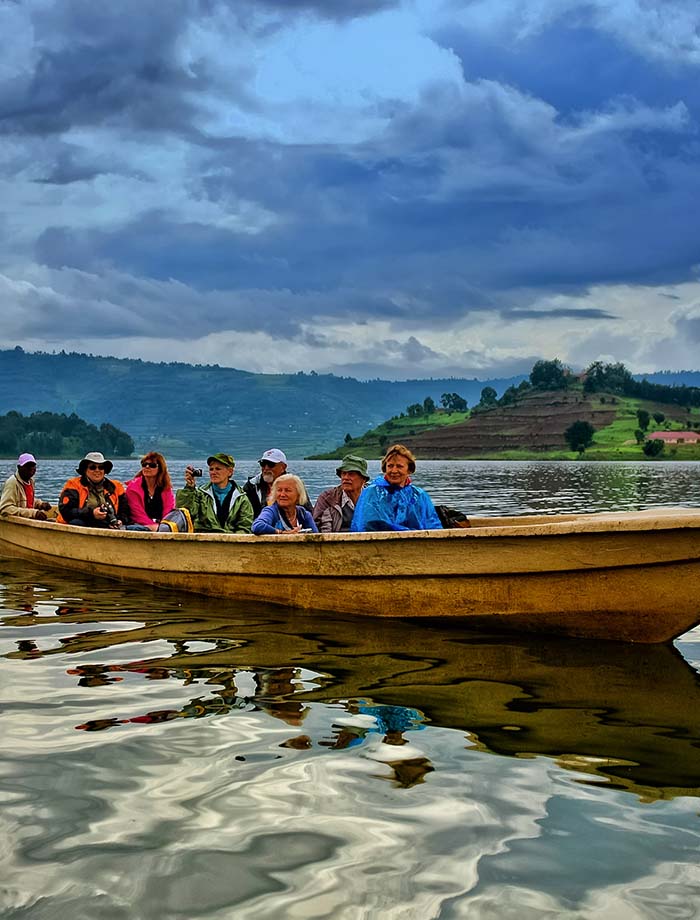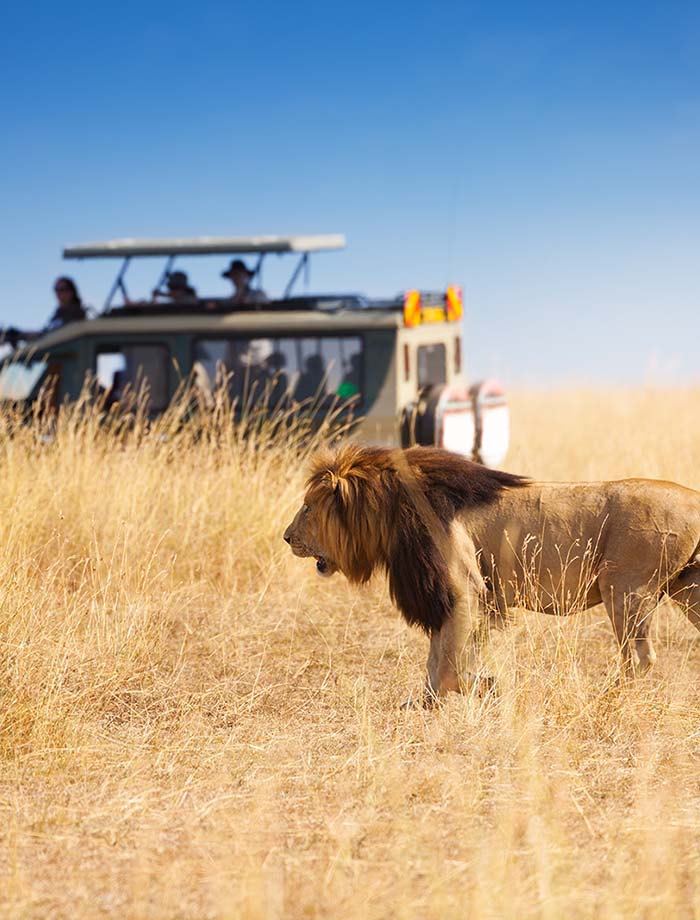Queen Elizabeth National Park
– A medley of wonders
Scenic and biodiverse, Queen Elizabeth National Park is Uganda’s most popular protected area. Divers ecosystems, including sprawling savanna, shady forests, sparkling lakes and lush wetlands, provide ideal habitats for classic big game, forest primates, and birds. These varied habitats support a wealth of wildlife with more mammal species (95) than any other Ugandan park and over 600 bird species-phenomenal number for such a small area. Expect to see African safari favorites such as elephants, buffalos and hippos while the chances of finding lions on the planes of Kasenyi and Ishasha are good.
An abundance of magnificent vistas include the jagged backdrop of the Rwenzori Mountains; rolling hills packed with extinct volcanic craters; open, rift valley grasslands at Kasenyi and Ishasha; the hippo-lined Kazinga Channel; and the Mutebi mountains in Congo rising above the distant, western shore of Lake Edward. Queen Elizabeth National Park was initially named Kazinga National Park in 1952, but was renamed 2 years later to commemorate a visit by Queen Elizabeth ll.
Activities and Attractions in Queen Elizabeth National Park
Mweya Peninsula And The Kazinga Channel
Queen Elizabeth National Park‘s main tourism hub is found on Mweya Peninsula, 22km west of the Kasese-Mbarara road. Mweya, which occupies an elevated plateau overlooking the Kazinga channel and Lake Edward, is the site of an upmarket lodge; budget UWA run accommodation; a marina for launch trips on the channel and a visitor information centre.
Launch Cruises
A cruise on the Kazinga channel provide the most relaxing way to view game in Queen Elizabeth National Park. The 2-hour return voyage between Mweya channel’s entrance into Lake Edward cruises beside bank lined with resident hippos, crocodiles and water birds and visiting elephant, buffalo and antelopes.
Game Drives
Kasenyi plains
The open grasslands of Kasenyi provide Queen Elizabeth National Park’s primary game viewing area, thanks to resident herds of Uganda kob and the lions that prey on them. The park’s experienced ranger guides can usually located lions but predator sightings can be guaranteed by signing up for a tour with the Mweya-based Uganda predator project which monitors the movement of lions, leopards and hyenas fitted with radio collars.
Ishasha
Queen Elizabeth National Park’s southernmost sector offers a classic game viewing experience under vast rift valley skies. Expect to see buffaloes, hippos, elephants, topi and more besides. The chance of sighting lions is particularly good in Ishasha.
Forest Walks
Kyambura gorge
The forest-filled Kyambura Gorge extends from the Kichwamba Escarpments to the Kazinga Channel. Enjoy the giddy viewpoint on the edge of the 100m-dee p chasm before descending into the depths to track chimpanzees with UWA guides.
Maramagambo Forest
At the foot of the Kichwamba Escarpment, the shady Maramagambo contrasts with the park’s open grasslands. Guided walks afford sightings primates and rare birds (including the forest flycatcher, white-naped pigeon and the striking Rwenzori turaco ) and visit the bat cave it’s resident bat-gorgea python.
Birding
Birding activities overlap with the wildlife viewing location described above Highlights include easy sighting of resident and migratory waterbirds on the Kazinga channel spectacular seasonal congregations of flamingos on the Kyambura and katwe soda lake;careful searches for rare and restricted range forest species in Maramagambo forest; and memorable shoebill sightings on the remote Lake Edward flats in Ishasha.
Volcanic Explosion Craters
Crater Drive
Dozens of volcanic craters pock the landscape north of mweya to remind us of the Albertine Rift’s violent tectonic history. The 27km Crater Drive between the Kabatoro and Crater gates follows a breathtaking route around the rims of extinct craters filled, variously ,with lakes, forest and Grassland.
Katwe salt Lake
The people of Katwe town, 12km from Mwenya, have been extracting salt from the saline Lake Katwe using evaporation pans since the 14th century. Local guides will escort visitors down into the crater to see the process. The adjacent Lake Munyanyange is rich in waterbirds, including migrating lesser flamingo between August and November.
Best time of the year to visit Queen Elizabeth National Park
The time of visit varies depending on the seasons that’s wet or dry. The best months to see volumes of wildlife is December- February and June- September. The best time for bird watching is March- September and Migratory bird watching in November-April. The wet seasons are March, April, May and November with higher rains that cause delays due to in passable roads and wildlife encounters.
However, due to global warming there has been a change in the rainfall patterns therefore this can change year after year.
How to access Queen Elizabeth National Park
Roads
The routes from Kampala to Mweya, the primary tourism hub in Queen Elizabeth National Park, The most scenic route passes through Fort Portal (410km) and offers detours to Kabale, Semiliki and Rwenzori Mountains national park. The alternative (420km) runs through Mbarara and bushenyi and passes
Lake Mduru National Park. Queen Elizabeth National Park’s southerly ishasha sector is directly on the main route to/from Buhoma, the main mountain gorilla tracking trailhead in Bwindi Impenetrable National Park, which lies 62km south.
Air
Charter flights can be arranged to airstrips at Kasese, Mweya and Ishasha.
Make an Enquiry/ Talk to an Expert
Queen Elizabeth National Park in Pictures
Our Recommended African Safari Ideas
Our itinerary ideas will give you a starting point for what your trip could entail. Treat them just as inspiration, as each trip is created uniquely for you and there are many more options available.


